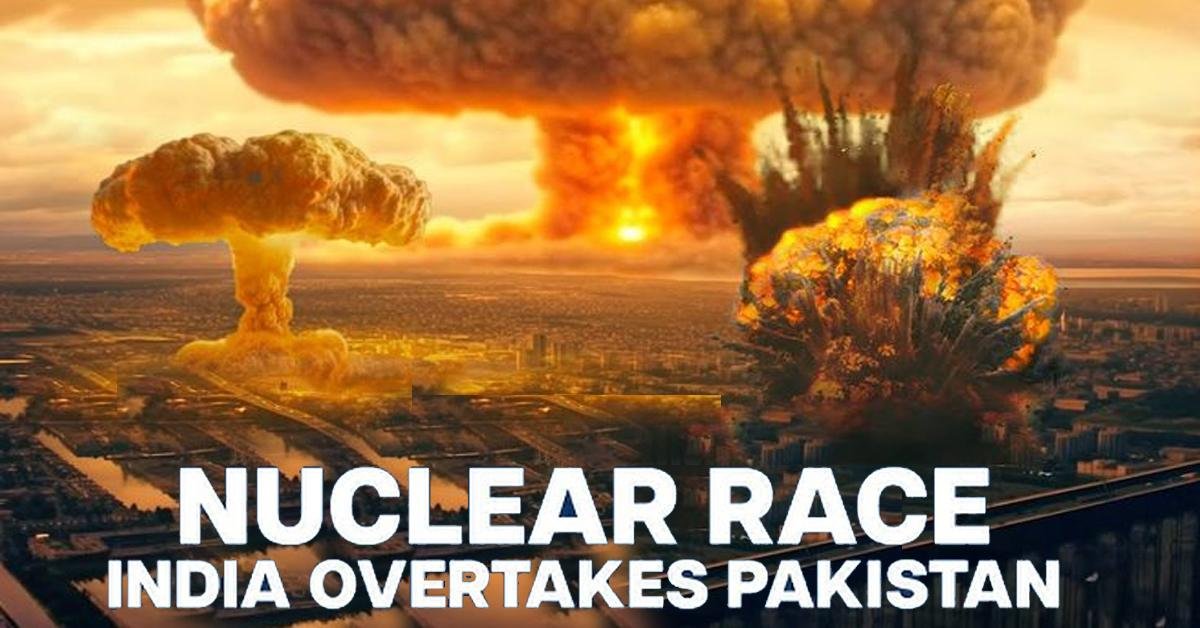This Gori Shaheen Ghaznavi is not for decoration in the square; we have kept it there. After the Pahalgam attack, as soon as India took five decisions, including cancelling the Indus agreement, Pakistan’s Railway Minister Hanif Abbasi started seeing the bow of the nuclear bomb. Rest Deputy PM Ishqdar also tried to scare India with a nuclear bomb. After all, why does Pakistan start threatening a nuclear attack directly as soon as India becomes strict? Does India need to be afraid?After the Kargil war in 1999, the Pak terror attack in 2016, the Balakot air strike in 2019, and now the Pahalgam terror attack, Pakistan has been threatening a nuclear attack every time. Why does it do so? There are three big reasons behind this. First, Pakistan feels that it cannot win against India in a conventional war like war, naval power, and economically. India is the fourth most powerful military in the world, so Pakistan always needs to be afraid of the nuclear threat. Secondly, Pakistan tries to pull India so that countries like America and China can stop India from taking action. Third and lastly, the people of Pakistan, who are struggling with poverty and terrorism, to divert attention from important issues, the government of Pakistan and the people of Pakistan try to create a nationalistic atmosphere through nuclear threats. India is also a nuclear-rich country, it can also launch a nuclear attack on Pakistan. However, there is a lot of difference between the nuclear policies of India and Pakistan. Under the Nuclear Doctrine issued in 2003, India has a policy of ‘whoever attacks first, he will attack first’, that is, India will not launch a nuclear attack first, although if any country launches a nuclear attack, it can retaliate. On the other hand, Pakistan does not have any nuclear weapons; that is, if the opportunity arises, it can launch a nuclear attack first. In India, the button for nuclear attack is with PM Modi and National Security Advisor Ajit Doval, who are the chairpersons of the Political Council and Executive Council of the National Command Authority. In Pakistan, the National Command Authority itself decides on nuclear weapons, whose chairperson is the Prime Minister. In the year 2002, Pakistan’s Lieutenant General Khalid Ahmed Kidwai said It was said that the target of Pakistan’s nuclear weapons is only India. At that time, he was the head of the Strategic Plants Division. While talking to the Italian Arms Control Institute Lado Network, he had said that if India conquers a large part of Pakistan, damages a part of Thalia Air Service, weakens it economically, or a situation like a civil war arises, then a nuclear attack will be carried out. In 2025, a report of the Federation of American Scientists was released. It was said that India has 180 nuclear weapons while Pakistan has 170. Pakistan has technical nuclear weapons that target a range of 60 to 70 kilometers, which is a big challenge for India. India does not have a nuclear missile that can attack within a range of less than 100 kilometers. However, India is a nuclear trade country that can fire nuclear missiles from land, air, and all three places. India has not made any changes in its nuclear policy since 2003. However, in 2019, Defense Minister Rajnath Singh had said in Pokhran that what happens in the future will depend on the circumstances. Experts believe that India will have to increase its nuclear weapons. There should be a change in the policy.
How will the Rafale M jet make the Indian Navy stronger? Know its specialties
A deal of 26 Rafale Marine Fighters is going to be signed between India and France. It is going to be signed at the Naval Bhawan Lake in Delhi. According to reports, the French Ambassador to India and the Indian Defense Ministry will be present in this agreement, in which Defense Secretary Rajesh Kumar Singh can be present from India’s side, while the Defense Ministers of France and India can join it digitally.
This is the biggest deal. The deal of 26 April is going to be signed between India and France in a short while. The speed of Rafale M is going to be 2000 kilometers per hour, and now it is going to increase India’s strength in the water as well. See the spread of the wings, with what kind of power is Rafale M joining the Indian Navy, from this you can guess that Manjeet Rab, our strength is increasing, we are seeing and the enemy countries must also be watching us, but at the time when this deal was done, this deal was already there or India has done this deal now because the kind of atmosphere after Pahalgam, that is why questions are being raised that the security India’s power will double in the coming days. India already has 36 Rafales, which will write the story of the destruction of enemies from the skies of India. Now, the power of 26 Marine Rafales will be enough to bury Pakistan not only on land but also in the sea. Rafale is another name for destruction, and this is the power that can destroy the enemies of India. India has made the third son of the film in the protection of the skies of India. To give equal power in the sea, India has decided to buy 26 Marine Rafales from France. The deal was made for more than Rs. 64000 crores. The sale was done when Pakistan tested the patience of India by massacring 27 Hindus in Pahalgam. Immediately after the massacre of 22 April, in the meeting of the Cabinet Committee on Security (CCS) held in Delhi, it was decided to buy 26 more Rafale Marine Foreign from France, which will be used to bury the Pakistani army in the Arabian Sea. This deal will include 22 single-seater and four twin-seater fighter jets, along with maintenance and logistics support personnel. The package of training and indigenous manufacturing will also be included. All these 26 marines will operate from Vikrant and will support the existing MiG-29 radar. With this addition, the number of fighters will increase to 62 at night, and now the Indian Navy, which keeps an eye on every movement of terrorist sites in the sea, can bury the Pakistani army in the sea before it can do any nefarious act. The specialty of this super landing machine is that the maximum speed of the 10.5 m fighter is 2200 kilometers per hour, which can disappear at a height of 18000 meters in a minute with more than 11000 kg of fuel. This fighter, which can fly once and fight up to a range of 37 kilometers, can fly up to a height of 50000 feet. Its radar system can identify 40 targets simultaneously within a radius of 100 kilometers. These fighters will be deployed on INS Vikrant for the war of the Indian Navy, which can operate from a runway of just 200 meters and can fly in the sky. After reaching India, it is difficult for anyone to escape the power of Rafale Marine from air to sea and land because this fighter, designed for air and anti-nuclear plant attack, has cruise missiles like Scalp, which is a long-range air-to-air missile and is also equipped with many other weapons. Rafale is capable of carrying laser-guided bombs weighing up to 9 quintals. From GPS guide hammer pumps to ACP, Silas is also installed. Before the purchase from India was confirmed, France showed the special features of Rafale Marine in a sea war and its landing and take-off. Considering the terrorist attitude of a country like Pakistan, it has become very important to have Rafale in the Indian Navy. However, it will take at least 3 years for India to get the power of this storm. Rafale Marine will be delivered to India between 2028 and 20, and then the enemies of India will be protected not only from the sky but also from the sea.
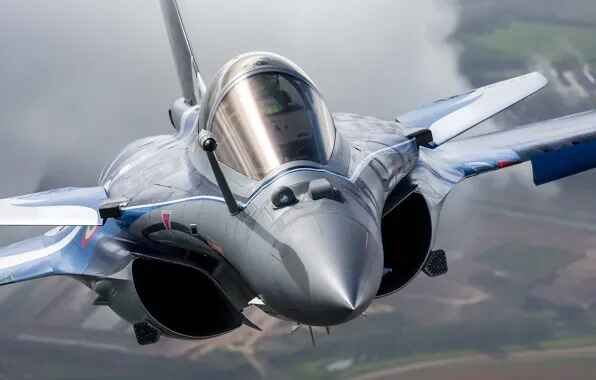
Rafale M: Key Features & Benefits
| Category | Details |
|---|---|
| Multi-Role Capability | – Air-to-air, air-to-ground, anti-ship, nuclear strike (ASMP-A), and ISR. |
| Carrier Compatibility | – CATOBAR operations. – Foldable wings. – Reinforced landing gear. |
| Avionics & Sensors | – RBE2-AA AESA radar (200+ km range). – OSF IRST. – SPECTRA EW suite. |
| Survivability | – Reduced RCS (stealth shaping). – SPECTRA autonomic defense (flares/chaff). |
| Weapons | – 14 hardpoints (9.5 tons payload). – Meteor, SCALP-EG, Exocet AM39, Hammer. |
| Engine | – Snecma M88 engines. – Supercruise capability (supersonic without afterburners). |
| Interoperability | – NATO-compatible. – Real-time data fusion with allied systems. |
| Cost | – ~$100M per unit. – 30% lower lifecycle costs vs. older jets. |
Rafale M vs. Competitors
| Feature | Rafale M | F/A-18 Super Hornet | F-35C Lightning II |
|---|---|---|---|
| Engine | Twin M88 (Supercruise) | Twin F414 | Single F135 |
| Payload Capacity | 9.5 tons | 8.1 tons | 8.1 tons |
| Carrier Ops | CATOBAR | CATOBAR | CATOBAR |
| Nuclear Capability | Yes (ASMP-A missile) | No | No |
| Stealth | Reduced RCS | Minimal | Advanced stealth |
| Cost per Unit | ~$100 million | ~$70 million | ~$120 million |
| Key Strength | Multi-role flexibility | Proven reliability | Sensor fusion & stealth |
Strategic Advantages of Rafale M
- Combat-Proven: 99% mission success in Libya, Syria, and anti-piracy ops.
- Quick Deployment: Carrier-based global power projection.
- Deterrence: Nuclear strike capability.
Why Nations Choose Rafale M
| Country | Reason |
|---|---|
| France | Backbone of Charles de Gaulle carrier operations. |
| India | Selected for INS Vikrant; outperformed F/A-18 in trials. |
| UAE | Modernizing air force with multi-role capabilities. |
What will the world do if India attacks Pakistan? This power of India will surprise the terrorists! discuess with indian defense experts
There should be such a war, but it is certain that if there is a war and India attacks Pakistan, then there will be peace efforts in the world, but most of the world, which is about 80 to 90%, will be completely in support of India. It is not just because India has been suffering from terrorism for 30 to 35 years, but it is because the terrorism that India has suffered for the last 35 years is now gradually spreading all over the world. You saw in America since 9/11, their mentality has completely changed regarding terrorism. You have seen in Europe now that lone wolf attacks happen, someone comes in a truck, comes in a car, drives the car over people in the Christmas market or any market at the intersection. It happens in Nice, France, Germany, and Sweden. The way we are seeing it there, if anyone speaks publicly against Islamic terrorism, he is killed. So, a lot of changes are coming in Europe too. Radicalization has increased a lot, like I have seen in Sweden, Germany. There have been many incidents in the Netherlands in which terrorist attacks have taken place, so Europe is also in its grip, Australia is also in its grip, there has been an attack in New Zealand and it keeps happening in America, so I think that India will get full support and overall we have an intelligence network, technology and equipment which we do is one thing but our technology intelligence and strategic partnership and defense partnership with others, on the basis of that we get a lot of information, a lot of technology and a lot of equipment, especially I would say Israel, France, America, Russia, we get the most corporations from them today and Israel is so much that they do not even talk about it, I talk to Israeli politicians or some military people, ask anything, but there is a complete understanding about military and technology, but there is a lot of help that when the war happened in Kargil, Israel helped India a lot, it is fully publicly stated everywhere and when the war happened recently, Daniel Caravan, their ambassador in India, he wrote an article and said that When Kargil happened, Israel helped India and remembered it and today when we are being attacked, India remembers us and is helping us, nobody knows but help is being given and is helping and the Spice bombs that were dropped in Balakot in India were also from Israel, a lot of technology also came from Israel, so even now I feel that there is a huge support on terrorism and I want to tell you one more thing which I have not told the public till now that all the foreign diplomats, politicians come, we have regular meetings because I do foreign affairs, a very big Israeli official had recently come to India and when I was having dinner with him, he whispered in my ear that these Hamas people who have gone to Pakistan occupied Kashmir, you should not take it lightly, I feel that a very big challenge is going to come for you and it was clearly feared that a new terrorism is going to start, that is why I wrote an article that India Should be prepared for this new way of Jihad is terrorism in Kashmir. A new wave of terrorism by Jihadis is going to attack Kashmir from Pakistan. India has been making mistakes; there have been intelligence and security failures as well, but many times it becomes very difficult to pinpoint such a big place. When people were sleeping, thinking that a terrorist attack would take place somewhere else, it took place in Pahalgam. Pahalgam is a place where such a terrorist attack has never taken place before, and no one had ever thought that it would take place. So I think that many things will change after this terrorist attack. A new chapter of terrorism has just begun. But many things are going to change in India regarding internal security. A new phase of terrorism has begun. In response to that, I feel that a new phase is about to begin, or has already begun.
History of Islam in Jammu and Kashmir
Jammu and Kashmir has been in the grip of terrorism for the last 30 years. At present, the terrorist attack in Pahalgam has shaken the whole country. As soon as the topic of Jammu and Kashmir comes up, many ‘scholars’ become active on social media with all kinds of stories, questions, and solutions. To understand Kashmir, it is important to understand the history of Kashmir.
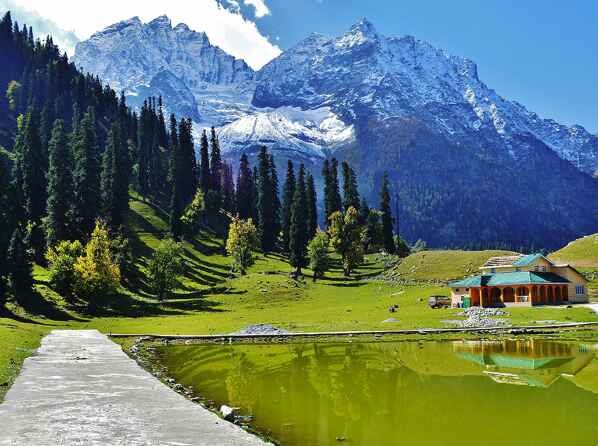
Kashmir, where should we start from? Whether it is from Jahangir’s Persian poem ‘Firdaus par zameen jaate’ or AR Rahman’s beautiful music, these beautiful valleys, these open skies, where do we start? From Jahangir’s hanging to AR Rahman’s wonderful composition, we all see the beauty of this place, but right now, we can see only blood scattered all around in the beautiful video of Kashmir. This blood is of those innocent people of India, whose only mistake was that they thought of making some moments of their lives beautiful. Jammu and Kashmir has been in the grip of terrorism for the last 30 years. At present, the terrorist attack in Pahalgam has shaken the whole country. As soon as we talk about Jammu and Kashmir, many scholars become active on social media with all kinds of stories, questions, and solutions. To understand Kashmir, it is first necessary to understand the history of Kashmir. At present, more than 85 lakh Muslims live in Jammu and Kashmir. The Muslim population dominates in 17 out of 22 districts here, but about 1100 years ago, there was no Islam in Kashmir. Kashmiris in the history of Kashmir Pandits were forced to leave their homes not once but twice. How did Islam come to Kashmir? What was there in Kashmir before Islam? For this, we know that Kashmir was named after the sage Kashyap. Famous poet and historian Kalyan has written the history of Kashmir in his book Rajtarangini. Kalyan connects the origin of Kashmir with Neel Mat Purana and tells that at the beginning of the epic, there used to be a huge lake named Kashyap. The family guru of the Nagas, Kashya, freed this lake from demons and settled the city. In the initial period in Kashmir, Buddhism and Shaikh Mat flourished a lot. The Mahayana sect flourished a lot in Kashmir. Buddhism was widely propagated in Kashmir during the period of Emperor Ashoka, who ruled from 268 BC to 232 BC. During the period of Emperor Ashoka, Buddhism gained a lot of popularity in the valley, but later the Kushan dynasty ruled as the mighty king Kanishka. During this period, Buddhism was declared the state religion. Apart from Buddhism, Kashmir is also considered to be the stronghold of Shaikh Mat. Basu Gupta introduced Shaikh Mat in Kashmir in the latter half of the ninth century. According to the information, Vasu Gupta’s disciples Kalkat and Somanand started the new tradition of Sahab Darshan. Kashmir remained the main center of Sahamat for centuries. You will be surprised to know that Vishnu Sharma wrote the story of Panchtantra while sitting in the land of Kashmir. The fall of Hindu kings started in the 14th century. The last Kashmiri king was Sahadev, who fled in 1320 in fear of Mangal A invader, Dulchul Khan, and Kashmir had to face the biggest attack in its history without a king. Taking advantage of this opportunity, the Buddhist prince of Ladakh, Rinchen Shah, with his friend and Sahadev, with the help of Kota Rani, daughter of Commander Ramchandra, boarded the Kashmir river. They adopted Islam and in this way became the first Muslim ruler of Kashmir. Later, Sahadev captured the Kashmir river, and then his descendants ruled here for centuries. Initially, these sultans remained tolerant, but during Sultan Sikandar’s time, Islamic rule peaked. During this period, the first migration of Kashmiri Pandits took place. This was the first time Kashmiri Pandits had to leave their home. Then there was a large-scale migration from the Hindu country. Many people embraced Islam, but in 1470, Zainul Abedin ascended the throne in Kashmir and completely changed the communal policies of his father and brother. His rule is considered to be the most glorious period in the history of Kashmir. A section of Kashmiri Pandits also returned during the period of Zainul Abedin. Due to his works done in the interest of the people, he is called a great ruler in Kashmiri history. By 1470, Muslims became the largest population in Kashmir. In 1589, Mughal commander Qasim Khan Mir hoisted the flag of the Mughal Sultanate in Kashmir. With the fall of the Mughal dynasty, its control over Kashmir ended, and in 1753, Afghans under the leadership of Ahmed Shah Abdali captured Kashmir. In 1819, the Muslim rule of about 500 years ended in Kashmir. Kashmir became a part of the Khalsa Empire of the greatest king of the Sikhs, Ranjit Singh. After the British laughed, the Sikhs gave up their rights on Kashmir. After the Sikhs, the Dogra dynasty gained control over Kashmir. The last king of the Dogra dynasty was Maharaja Hari Singh. Hari Singh did not sign the Instrument of Accession to India at Independence.
India Vs Pakistan: Who has more nuclear weapons?
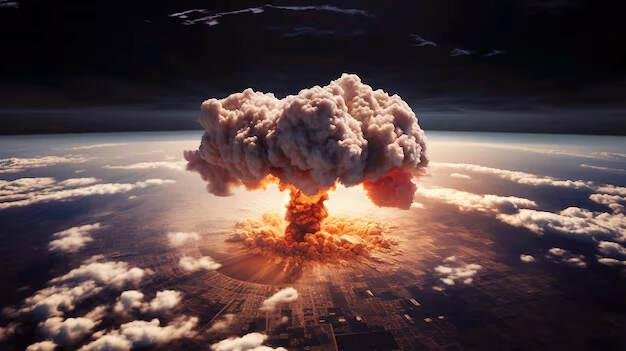
While several countries are currently facing war-like situations, post the Pahalgam attack, tensions between India and Pakistan are also on the rise. Pakistan’s leaders are now frequently threatening nuclear strikes. What’s notable is that Pakistan hasn’t signed the “No First Use” policy. In this report, we explain the NFU policy, compare the nuclear capabilities of India and Pakistan, and reveal who is more powerful in terms of nuclear strength. At present, many countries of the world are battling war, and after the Pahalgam attack, similar conditions have started appearing in India and Pakistan. Now, every day, the leaders of Pakistan are threatening nuclear attack, and the thing to note here is that Pakistan has not even signed the First Supplementary Protocol. In such a situation, in today’s report, we will tell you what the First Strike Policy is, and apart from this, who has more nuclear weapons among two, India and Pakistan. First of all, we will tell you about NUFU. NUFU means the First Supplementary Policy of India. It is an official declaration under which a country promises that it will not use nuclear weapons first on the enemy, but will only attack in retaliation. Pakistan does not follow any such policy. It even often uses nuclear weapons. Instead of NFU, Pakistan has taken the right to Full Spectrum Different. If there is an attack on it, then it can decide whether the retaliation will be with this level of attack, or there can be a nuclear attack as well. Now, let us look at the nuclear power of India and Pakistan. According to the 2024 report of the International Peace Research Institute, India has 172 nuclear weapons while Pakistan has 170 nuclear weapons, which means India has two more nuclear weapons than Pakistan. However, some media reports are also claiming that the number of India’s nuclear bombs has reached 180, but there is no official stamp on this number yet. The latest report of the Federation of American Scientists claims that, according to the Status of World Nuclear Forces, the number of nuclear weapons with India is now much higher than Pakistan. This number has reached 180. One thing to note here is that, according to the report of the Swedish think tank, China increased its nuclear arsenal from 410 nuclear weapons in January 2023 to 500 in January 2024. Let us tell you that there are a total of 9 countries in the world that are nuclear powers. India has nuclear weapons from all three places – water, land, and air. If we talk about land, then India’s Agni missile series, whose range is more than 700 km to 6000 km, is quite capable of launching nuclear weapons. In the same competition, the capability of Pakistan’s missile is about 2500 km. India’s Agni missile can destroy the whole of Pakistan. Now, let’s know who has control of nuclear weapons. Who has control of nuclear weapons in any country is kept a very secret. In Islamabad, it comes under confidential information. However, it is believed that the control of nuclear weapons is with the National Command Authority MCA, whose leader is the Prime Minister himself. Including him, there is a 10-member committee. It means that it is not possible that any day in anger, anyone presses the button of nuclear weapons. Apart from the PM, this NCA includes the President, Home Minister, Defense Minister, Army, Navy Air Commander. If the condition of war arises, all these people together make a decision. But the last mile will be put on it by the PM and the President. The responsibility of launching nuclear weapons will be on the C. On the other hand, if we talk about India, the control of the nuclear bomb in India is completely with the civilian leadership Government of India. The Nuclear Command Authority of India MCA takes any decision related to a nuclear bomb. The final decision on nuclear weapons is taken under the leadership of the Prime Minister. That is, it is clear that the control of the nuclear bomb in India is completely in the hands of the Prime Minister and the Central Government. No decision can be taken alone. Let us tell you that India’s journey of making a nuclear bomb started in 1974 when it did its first nuclear test, and India became the sixth country in the world to do so. After this, Pakistan successfully tested its nuclear bombs in 1998, after which both countries got stuck in the dilemma of nuclear weapons. However, after testing the nuclear bomb, Pakistan made nuclear weapons faster than India and always kept more nuclear weapons in its stockpile than India. So, in such a situation, what do you think if there were a situation of war? So, will India destroy Pakistan, or can something else happen?
Pakistan’s nuclear weapons are a threat to the US as well, it will capture America immediately in 3 scenarios. What is the complete plan?
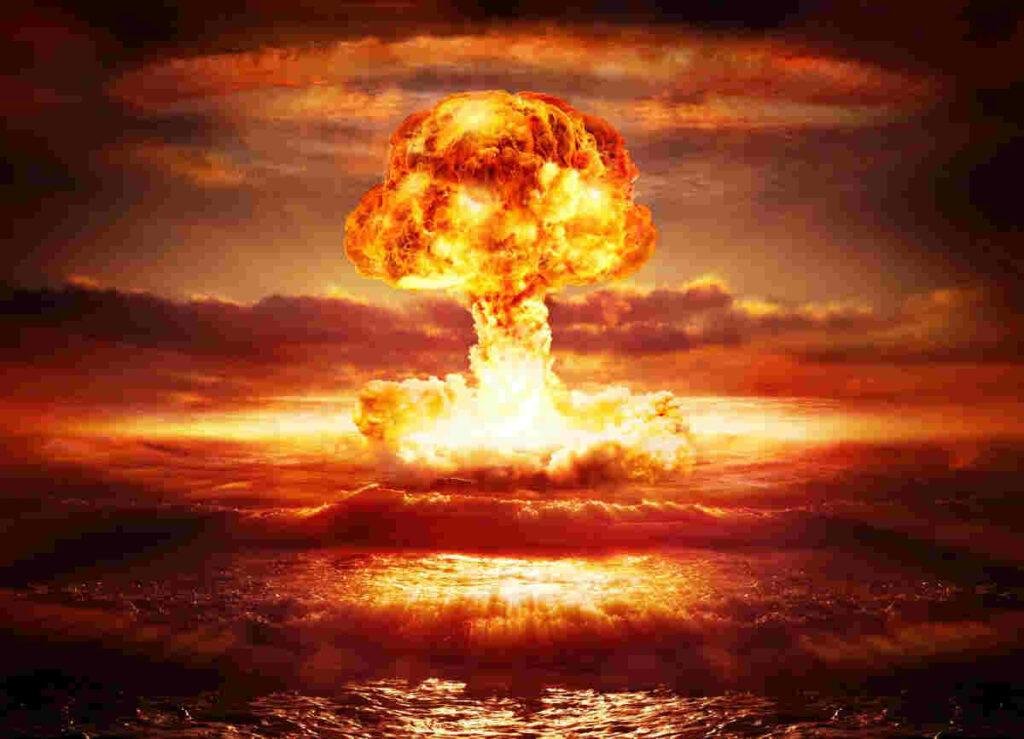
Pakistan’s Railway Minister Hanif Abbasi is threatening nuclear weapons like Manoj is Diwali crackers in Ghazni Chowk. America understands the danger of being responsible. That is why it is said that it has prepared a contingency plan to capture Pakistan’s nuclear weapons. Does America have such a plan, and how can it capture Pakistan’s nuclear weapons? We will know in today’s explainer. On April 11, 2010, then US President Barack Obama wrote to South African President Jacob Zuma that organizations like Al Qaeda are trying to acquire nuclear weapons. They will have no regrets in using them. This is America’s biggest concern. American channel NBC News, after talking to several American officers in 2011, claimed that America had made an emergency plan to seize Pakistan’s nuclear weapons. Wikileaks and some American defense journals also reported that the American intelligence agency, the CIA, and Special Forces have prepared a contingency plan in which the location of Pakistan’s nuclear weapons has been mapped, and they can be captured quickly. Operation sketches have been made to do this, and if needed, options to disable or blow up nuclear weapons have also been included. Now, let us know when America can activate this alleged plan According to the NBC News report, there are three scenarios for this First, if terrorists take control of Pakistan’s nuclear weapons, second, Islamic fundamentalists take control of the government or services, and third, internal anarchy spreads in Pakistan and a situation like a coup is created there. Apart from this, if Pakistan becomes impatient for a nuclear attack in the event of a war with India, then America can activate this plan, but how will America execute this plan? According to reports, America’s Joint Special Operations Command JSOC has been preparing for such an operation for many years. JC has all the equipment, including jets, parachutes, and has already executed the Render Safe mission to deactivate nuclear weapons. Now the question arises that how will Pakistan’s nuclear weapons be destroyed? First of all, the JC team will enter Pakistan and deactivate the tactical nuclear weaponsAccording to the NBC News report, there are three scenarios for this. Experts will stop the trigger mechanism of the nuclear weapons to deactivate them, capture the remaining weapons, and then leave Pakistan. As soon as the soldiers leave, a missile strike will be carried out on Pakistan’s nuclear weapons. So,o is it so easy to capture Pakistan’s nuclear weapons? Pakistan keeps shifting its nuclear weapons between 15 or more nuclear facilities. Former US National Security Advisor James Jones had also said that if anyone tells you that he knows where all of Pakistan’s nuclear weapons are, he is lying every year.
Pakistan has a debt of ₹21.6 lakh crore, its treasury is empty; 11 thousand crores were to be received, India is going to stop that too
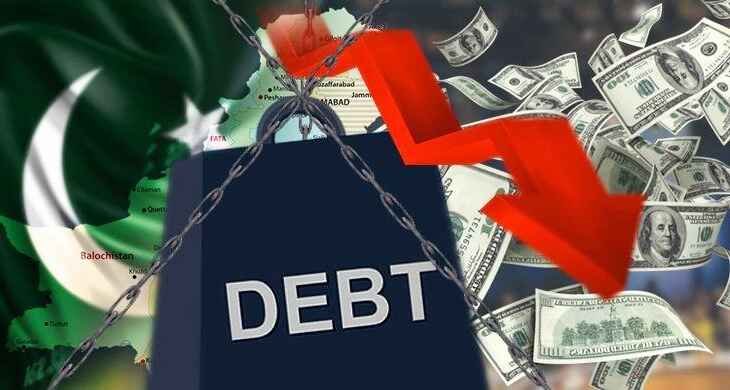
Every child of Pakistan is born with a debt of about 87000 on their head. Be it the oil import bill or daily expenses like tourism and subsidies, the entire economy of Pakistan is running on debt. Pakistan has once again asked you for about 11000 crore rupees, which India can stop. After all, how much debt does Pakistan have in total, and will it stop getting loans under pressure from India? Let us know according to the report of the Pakistan government of June 2024, the country has a debt of Rs 21.6 crores, which is 67% of Pakistan’s total GDP. Pakistan says that it has a foreign debt of about Rs 7.3 trillion. Foreign debt is the money that Pakistan has borrowed from other countries, international banks, and institutions like the IMF. This debt is usually in US dollars, and to repay it, Pakistan needs foreign currency dollars only. Pakistan has only 1.3 domestic currency reserves left, which can meet the expenses of Mahesh for 3 months. Now let us know who has given so much debt to Pakistan. According to the World Bank International Debt Report 2024, China has given the highest foreign debt of about Rs 2.4 crore to Pakistan. Apart from this, Saudi Arabia, UAE, and Qatar have also given a lot of loans to Pakistan, but where does Pakistan use the loan money? It is trapped in a debt trap in its own way. It is now taking loans and taking another loan. Like in December 2020, China gave a loan of Rs 12.6 crore. At this time, Pakistan had to pay the installment of the loan taken from Saudi Arabia. Pakistan’s 8.4 crore rupees were spent on repaying it. Apart from this, a large part of the loan is also spent on buying petrol and gas from abroad. Even for basic expenses like essential goods and salaries, Pakistan has to take loans. In 2024, Pakistan was not able to pay salaries to its officials working abroad. In such a situation, the IMF approved a loan of about Rs 59000 crore for Pakistan. So, did Pakistan get a loan from the IMF under pressure from India? Will not be able to get it. The next meeting of the IMF’s Executive Board is going to be held on 9th May 2025. In this, the loan of around 11000 crore rupees to be given to Pakistan is to be reviewed. According to the report, India can oppose giving this money to Pakistan by raising the issue of terrorism. India can vote against getting the loan this time. Expert and JNU professor Rajan Kumar says that the news of the Pahalgam attack is still going on, and there are allegations of Pakistan’s involvement in it. In such a situation, India can try to stop the loan on this issue in the meeting, but stopping the loan is difficult at the moment. However, if Fatah puts Pakistan in the grey list due to India’s efforts, then the IMF loan can be stopped.
